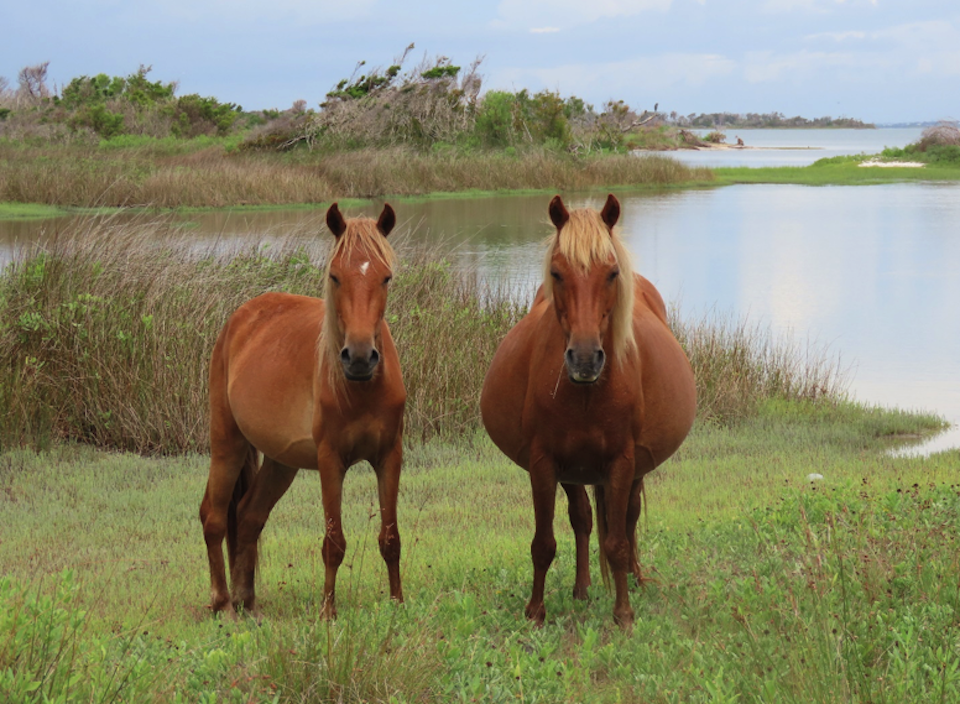
Two mares on Shackleford Banks; One on the right is ‘expecting.'/NPS VIP Crystal Wasley
The unexpected loss in 2019 of six young horses drove the mortality rate of horses on Shackleford Banks at Cape Lookout National Seashore to twice its normal average, but overall the herd's population isn't too far off the goal set by the National Park Service and the average mortality rate in the single-digits.
Overall, 14 horses were lost from the herd last year: Two 25-year-old mares, a 23-year-old mare, a 22-year-old stallion (which is old for a stallion), a 21-year-old mare, a 19-year-old stallion, two 18-year-old stallions (this is a normal death age for Shackleford Banks stallions, though one was in good condition so that was unexpected), a 7-year-old mare (this was unexpected), a 3-year-old stallion (who was unusually thin), and four foals.
Even with the loss of those 14, the herd's population was at 111 individuals, not far from the goal of 120-130. The herd's average annual mortality rate remains 6 percent, the park and Foundation for Shackleford Horses noted in their annual report. Ten foals were born to the herd in 2019.
The herd was 62 percent female and 38 percent male. Part of the reason that there are more females is that some females are living longer, the park said. Of the horses over 20 years of age, there are only two males but 15 females. The oldest horses living on the island are two 26-year-old mares.
Cape Lookout National Seashore and the Foundation for Shackleford Horses, Inc., emphasize that the most important factor in protecting the wild horses on Shackleford is public education. As a result, they have increased efforts to inform the public how best to watch the horses without interacting with them or interrupting their natural behavior, and those messages are regularly communicated in the media and through programs like the Park’s “Horse Sense and Survival” tours.
The park now also offers visitors an opportunity to learn more about the wild horses by taking part in the Junior Ranger Wild Horse Protector activity. Designed for kids in grades 6th through 8th, a parent, guardian, or youth leader may check out a backpack with instruments needed to complete activities like those done by the wild horse Biologist. Upon completion, students receive an award and are certified as Wild Horse Protectors.



Add comment